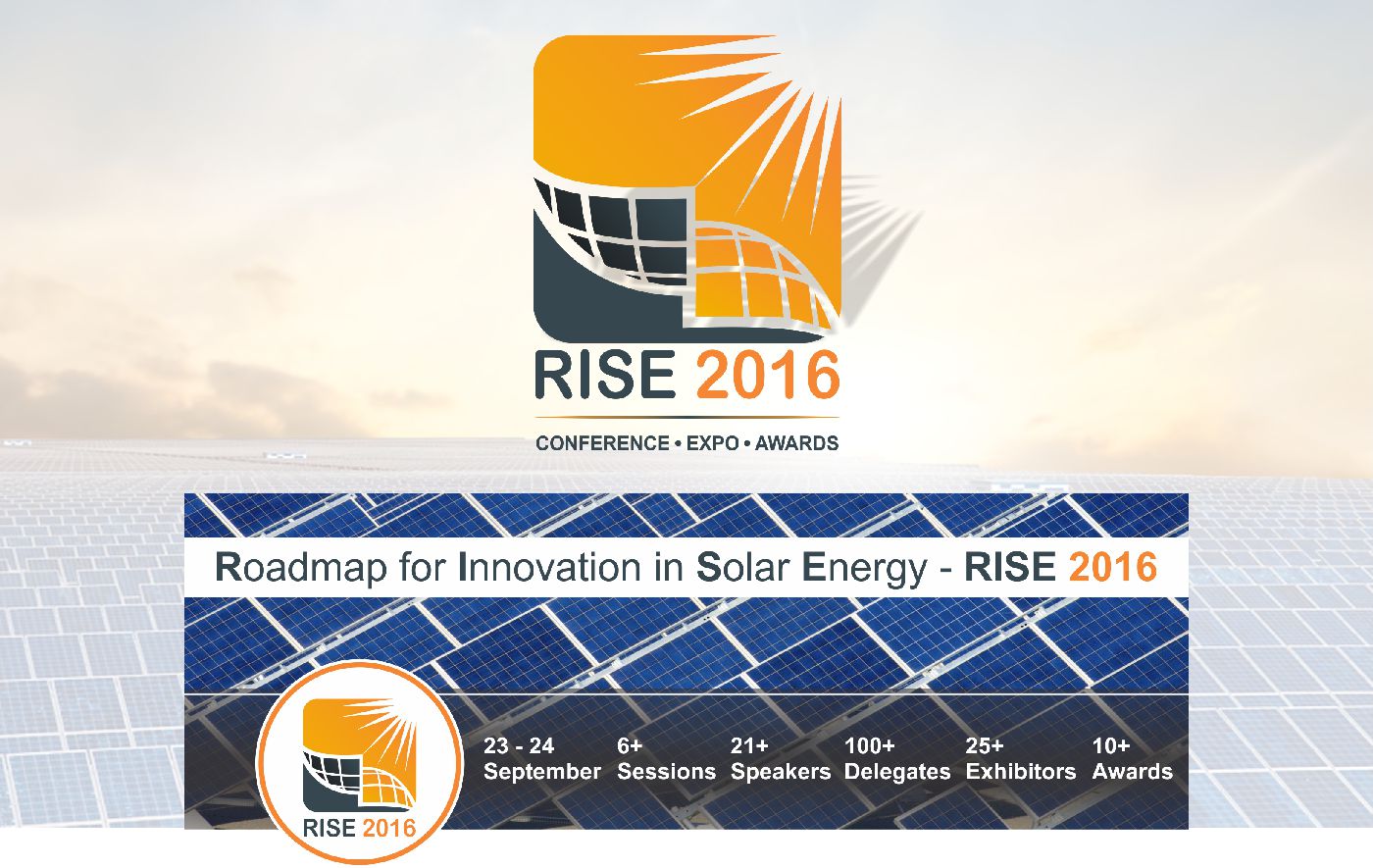

INDIA is having a “POWER FULL” problem. The SOLUTION is inevitable - switch to more RENEWABLE ENERGY SOURCE, particularly solar energy in view of high solar incidence. As of 31st March 2016, total solar power capacity was 5,776 MW i.e., a mere 3% of coal based power.
With about 300 clear sunny days in a year, India's theoretically calculated solar energy incidence on its land area alone is about 5,000 trillion kilowatt hours (kWh) per year (or 5 E Wh/yr). The solar energy available in a year exceeds the possible energy output of all fossil fuel energy reserves in India. The daily average solar power plant generation capacity over India is 0.25 kWh per sqm of used land area, which is equivalent to about 1,500 –2,000 peak (rated) capacity operating hours in a year with the available commercially proven technologies.
Indian government reportedly committed to bring down carbon foot-print of India by 20% by 2020, i.e., reduction of about 322 million tons of CO2 per year. Remarkable efforts are needed to fulfil this commitment..
Under Clean Development Mechanism (CDM), India’s first 5 MW of installed capacity solar power project was registered on 16 May 2011. The project is in Sivagangai Village, Sivaganga district, Tamil Nadu.
In January 2015, the Indian government significantly expanded its solar plans, targeting US$100 billion of investment and 100 GW of solar capacity by 2022.
The Cabinet Committee on Economic Affairs approved in January 2016 over 5,000 MW of Grid-Connected Solar PV Power Projects on build, own and operate ( BOO ) basis to be implemented by Solar Power Developers (SPDs) with Viability Gap Funding (VGF) with an investment of about Rs 30,000cr. by FY 2018-19
The Government sets the ambitious target of generating 100 GW of solar power by the year 2021-22 under the National Solar Mission, 60 GW ground mounted grid-connected solar power and 40 GW through roof-top grid interactive solar power to fulfil the 100 GW of solar power.
India to achieve 40% cumulative electric power capacity from non-fossil fuel based energy resources by 2030 with the help of transfer of technology and low cost International Finance including from Green Climate Fund
The Cabinet Committee on Economic Affairs in December 2015, scaled up of budget from Rs 600cr. to Rs.5000cr. for implementation of Grid Connected Rooftops systems by installation of 4200 MW by 2019-20 through the residential, government, social and institutional sector (hospitals, educational institutions etc.)
Land availability for solar power plants, may pose a strain on India's already constrained land resource. Currently approximately 1 km2 (250 acres) for every 50 MW generated, this means additional land requirement of about 83,333 acres every year till 2022 from now.
Present PV cell manufacturing capacity in India is 297 MW as against the target requirement of at least 15 - 20 GW addition every year to fulfil the target of 100GW by 2022.
Further, states like Gujarat, Rajasthan, and Tamil Nadu etc have not yet mandated any DCR in their policies.
Huge investment is required for transmission; up-gradation of infrastructure in order to utilize power generated though Renewable Energy sources.
Adopting Building Integrated Photovoltaic (BIPV)
Entire manufacturing chain mostly dependent on import of components from other countries this is why the Government is encouraging backward integration to expand the chain of production in India and Indian manufacturers of solar technologies is expected to play a bigger role.
• And INNOVATION.....
To learn on what could be the future of solar industry, you need to participate at the most important conference RISE 2016
THE CONFERENCE
The future of the solar industry depends on a combination of factors - technological advancements, new innovation in manufacturing and system design, reforms in the electricity market, collaboration with and support from electricity regulators and policymakers.
In order to discuss the above and related issues, Mission Energy Foundation with the support of DIPP (Ministry of Commerce & Industry) and Ministry of New & Renewable Energy, Government of India, is organizing a summit Roadmap for Innovations in Solar Energy - RISE 2016 to be held on 23 & 24 September 2016 at Hotel Hilton - Mumbai.
THE EXHIBITION
Exhibiting at RISE 2016 is a cost effective and invaluable tool to help deliver your technology, product, equipment and services to senior decision makers of your core target market and will help grow your business.
The limited exhibition space will provide a platform to showcase and present the latest technology and innovative solutions.
THE AWARDS
Mission Energy Foundation strives to promote the industry’s power to innovate.
The Solar Innovation & Excellence Award will be introduced at RISE 2016, honouring innovative products and solutions for better development of the solar industry in the years to come ahead...
ADDRESS
MISSION ENERGY FOUNDATION
(A Not-for-Profit Organisation)
003, B-16, Sector 1, Shanti Nagar
Mira Road (East), Thane
Maharashtra 401107
CONTACTS
Email: help@missionenergy.org
Phone: +91 22 65220770 / 71
SHARE THIS PAGE!